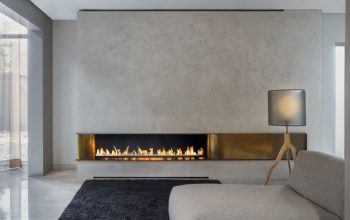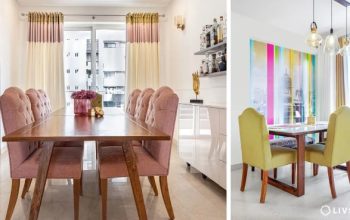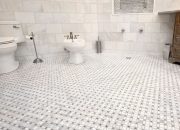Defining “Vintage” in Room Decor
Vintage room decor ideas – Ah, vintage! It conjures up images of charming yesteryears, doesn’t it? But what exactlyis* vintage style in interior design? It’s more than just “old”—it’s a specific aesthetic reflecting a particular period’s design trends, materials, and craftsmanship. Understanding this nuance is key to achieving a truly authentic vintage look in your home.
Characteristics of Vintage Style
Vintage style in interior design is characterized by a sense of nostalgia and timelessness. It involves incorporating pre-owned furniture and decor from specific historical periods, usually at least 20 years old but less than 100. Key characteristics include the use of quality materials, often showing signs of age and wear, unique craftsmanship that is often handmade or hand-finished, and a focus on functional design elements reflecting the style of its era.
The overall effect is one of warmth, character, and a unique story told through the pieces themselves.
Vintage room decor often involves repurposing and adding unique character. For a cohesive holiday look, consider extending that vintage aesthetic to your mantelpiece; check out these inspiring christmas mantel decor ideas for some creative ideas. Think antique ornaments, repurposed tinsel, or even a vintage sled as a centerpiece – all adding to the charm of your vintage room design.
Vintage Eras and Their Aesthetics
Several distinct vintage eras offer unique aesthetic possibilities.
1920s: The Roaring Twenties
Imagine flapper dresses and jazz music. The 1920s aesthetic features sleek lines, Art Deco influences, geometric patterns, and luxurious materials like velvet and lacquer. Furniture is often characterized by its low profile and streamlined designs, with a preference for chrome and dark woods. Color palettes tend towards rich jewel tones like emerald green, sapphire blue, and ruby red, contrasted with metallic accents.
1950s: Mid-Century Modern
This era embraced optimism and a futuristic vision. Mid-Century Modern features clean lines, organic shapes, and functionality. Think iconic Eames chairs, simple yet elegant furniture made of teak or walnut, and bright, cheerful colors. Color palettes are typically warmer, featuring yellows, oranges, and greens, often combined with neutral tones.
1970s: Retro Chic
The 1970s offered a bold and eclectic mix of styles. Think bold geometric patterns, earthy tones, and the use of natural materials like macrame and rattan. Furniture often features rounded shapes and plush textures. Color palettes included burnt oranges, browns, and mustard yellows, often combined with avocado green and shades of brown.
Vintage vs. Antique vs. Retro
It’s easy to confuse these terms, but there are key differences. “Antique” typically refers to items over 100 years old, possessing significant historical value. “Retro” describes a style that imitates a past era, often in a playful or ironic way. “Vintage,” as we’ve discussed, falls between these two, encompassing items at least 20 years old but less than 100, possessing a distinct aesthetic of their time period but not necessarily significant historical value.
Comparison of Three Vintage Styles
| Style | Key Furniture Pieces | Color Palette | Textures |
|---|---|---|---|
| 1920s Art Deco | Low profile sofas, chaise lounges, geometric patterned armchairs, lacquered cabinets | Emerald green, sapphire blue, ruby red, gold, black | Velvet, lacquer, polished wood, chrome |
| 1950s Mid-Century Modern | Eames chairs, tulip tables, Danish modern furniture, sleek credenzas | Yellows, oranges, greens, browns, teak and walnut tones | Wood, leather, upholstery fabrics like wool or linen |
| 1970s Retro | Rattan furniture, macrame wall hangings, modular sofas, velvet armchairs | Burnt orange, mustard yellow, avocado green, browns | Rattan, macrame, velvet, corduroy, shag carpeting |
Color Palettes and Textures for Vintage Rooms: Vintage Room Decor Ideas

Creating a truly vintage-inspired room requires careful consideration of both color palettes and textures. The right combination can transport you back in time, evoking a specific era and creating a wonderfully nostalgic atmosphere. Think of it as a delicious Palembang pempek – the perfect blend of ingredients creates a truly unforgettable experience!
Color choices are fundamental to establishing the desired vintage aesthetic. Different color palettes can conjure up different eras and moods, from the romantic softness of a Victorian boudoir to the bold sophistication of a 1920s art deco apartment. Similarly, the textures you choose will significantly influence the overall feel of the room, adding depth and authenticity to your design.
Popular Vintage Color Palettes
Several color palettes are frequently associated with vintage aesthetics. These palettes offer a range of options to suit different tastes and design preferences. They are the “bumbu rahasia” (secret spices) that make your vintage room truly special.
- Muted Greens and Creams: This palette evokes a sense of calm and serenity, often associated with cottagecore or shabby chic styles. Think sage green walls, creamy white trim, and pops of soft yellow.
- Dusty Rose and Mauve: These soft, romantic hues are perfect for creating a feminine and elegant space, reminiscent of the Victorian or Edwardian eras. Pair them with antique gold accents for extra richness.
- Burnt Orange and Mustard Yellow: This warm and inviting palette evokes a mid-century modern feel, full of sunshine and optimism. It works particularly well with dark wood furniture.
- Navy Blue and Cream: A classic and sophisticated combination, this palette works well for a nautical or preppy vintage style. Consider adding pops of red or white for contrast.
- Teal and Ivory: This calming and elegant palette is perfect for creating a sophisticated vintage space. It works well with both light and dark wood furniture and adds a touch of luxury.
Textures that Enhance a Vintage Feel
Texture is just as important as color in creating a convincing vintage aesthetic. The right textures can add depth, warmth, and a sense of history to your space. They are the “tekstur rasa” (texture of flavor) that adds richness to your vintage design.
- Velvet: Luxurious velvet upholstery on furniture adds a touch of old-world elegance. Its soft texture and rich sheen are perfect for creating a cozy and inviting atmosphere.
- Worn Wood: Distressed or antique wood furniture pieces add character and authenticity to a vintage room. The natural imperfections of the wood tell a story and contribute to the overall vintage feel.
- Distressed Metal: Metal accents with a distressed or antique finish, such as aged brass or copper, add a touch of vintage glamour and sophistication. They can be found on lighting fixtures, hardware, or decorative items.
- Lace and Linen: Delicate lace and crisp linen fabrics add a touch of romance and softness. They work well for curtains, bedding, and other soft furnishings.
- Woven Rugs: A vintage-inspired rug with a textured weave, such as a Persian or kilim rug, adds warmth and character to the floor. The rich patterns and colors can be a focal point of the room.
Vintage Bedroom Mood Board
Imagine a vintage bedroom mood board featuring a dusty rose wall as the backdrop. The wall is textured with a subtle plaster finish. A plush velvet headboard in a deep teal sits against the wall, above a bed with crisp white linen sheets and a crocheted throw blanket in a creamy ivory. A distressed wooden nightstand with brass hardware holds a vintage-style lamp with a pleated shade in a burnt orange hue.
The floor is covered with a woven rug in muted greens and creams. The overall aesthetic is romantic, sophisticated, and undeniably vintage, combining the soft hues of dusty rose and teal with the rich textures of velvet, linen, and wood. It’s a sanctuary of calm and understated elegance, reminiscent of a bygone era.
Furniture Selection for a Vintage Look

Choosing the right furniture is crucial for creating an authentic vintage atmosphere in your room. The pieces you select should not only be aesthetically pleasing but also reflect the specific vintage style you’re aiming for, whether it’s Art Deco glamour, mid-century modern simplicity, or rustic farmhouse charm. The right furniture will truly bring your vintage vision to life, adding character and warmth to your space.Furniture materials play a significant role in achieving a genuine vintage feel.
The inherent qualities of the materials contribute to the overall aesthetic, impacting both the look and feel of the room.
Vintage Furniture Styles and Materials
Different vintage styles utilize distinct furniture pieces and materials. For instance, Art Deco often features sleek, geometric designs in polished wood veneers and chrome, while mid-century modern embraces organic forms in teak or walnut wood. Rustic farmhouse styles favor sturdy, handcrafted pieces made from reclaimed wood and wrought iron. Cane and rattan are common in many vintage styles, adding a touch of natural texture and lightness.
The use of solid wood, particularly in pieces showing signs of age, is a hallmark of many vintage styles, contributing to the overall authenticity and charm.
The Importance of Furniture Condition and Patina
The condition and patina of vintage furniture are paramount in achieving the desired aesthetic. A well-preserved piece with a beautiful patina—the characteristic sheen or discoloration acquired over time—adds immense character and authenticity. Minor imperfections, like scratches or slight wear, can actually enhance the vintage feel, telling a story of the piece’s history and adding to its charm. While restoration is sometimes necessary, it’s important to retain as much of the original character as possible.
Striving for a perfectly pristine look would often detract from the desired vintage effect. A piece that looks too new will often clash with the overall ambience.
Five Essential Furniture Pieces for a Vintage Living Room, Vintage room decor ideas
Creating a cohesive vintage living room requires careful selection of key pieces. The following five pieces, when chosen thoughtfully, will form the foundation of a stylish and authentic vintage space.
- Sofa: A comfortable sofa in a classic style, perhaps a Chesterfield with button tufting (leather or velvet upholstery) for a more formal look, or a mid-century modern sofa with clean lines and tapered legs (upholstered in a patterned fabric or solid-color velvet). Solid wood frames are preferred.
- Armchair: A single armchair that complements the sofa, offering a different style or material to add visual interest. A wingback chair in a rich fabric, or a sleek, modern armchair in wood and cane, could be ideal choices.
- Coffee Table: A coffee table made of wood, possibly with a glass or marble top, offering a practical surface and contributing to the overall aesthetic. A vintage-style coffee table might feature intricate detailing or unique legs. Consider materials like solid wood or even a repurposed vintage trunk.
- Sideboard or Credenza: A sideboard or credenza provides ample storage and surface space. A solid wood piece with carved details or simple clean lines would be appropriate, depending on the chosen style. A vintage piece with a beautiful patina would add significant charm.
- Rug: A rug anchors the seating area and adds warmth and texture. Consider a vintage-style rug with a Persian or Oriental design, or a simpler, geometric rug in muted colors. The rug’s material and color should complement the overall color palette of the room.
Mixing Vintage with Modern Elements

Blending vintage and modern styles in your home decor can create a truly unique and captivating space. The key is to find a balance that celebrates the charm of vintage pieces while incorporating the clean lines and functionality of modern design. This isn’t about creating a museum; it’s about crafting a comfortable and stylish living space that reflects your personal taste.Successfully integrating vintage and modern elements requires a thoughtful approach.
It’s about understanding the strengths of each style and using them to complement one another, rather than clashing. Think of it as a conversation between two distinct yet compatible personalities.
Balancing Vintage and Modern Furniture
The most effective way to blend vintage and modern furniture is to consider scale, shape, and material. A large, ornate vintage sofa can be beautifully complemented by a sleek, minimalist coffee table made of glass or metal. Conversely, a pair of modern armchairs with clean lines could provide a contemporary counterpoint to a vintage dresser. The contrast in styles creates visual interest without feeling overwhelming.
For instance, a worn, wooden vintage writing desk paired with a modern chrome and glass desk lamp creates a delightful tension between rustic charm and futuristic elegance. The vintage piece anchors the space with its history and character, while the modern lamp adds a touch of sophistication and a functional update.
Avoiding a Cluttered or Dated Look
To prevent your space from feeling cluttered or stuck in the past, focus on maintaining a sense of openness and airiness. Avoid overcrowding the room with too many vintage items. Instead, select a few key pieces that serve as focal points and build around them with modern accents. Strategic use of negative space is crucial; allowing breathing room between furniture pieces prevents the room from feeling cramped and dated.
A good rule of thumb is to choose a dominant style (either vintage or modern) and then use the other style as an accent. For example, a primarily modern living room could feature a single, striking vintage armchair as a statement piece.
Using Modern Elements to Enhance Vintage Features
Modern elements can breathe new life into vintage pieces without overshadowing their inherent beauty. Consider using modern lighting fixtures to illuminate vintage artwork or furniture. A sleek, minimalist pendant light can beautifully highlight a vintage sideboard, drawing attention to its intricate details. Similarly, a modern rug can ground a vintage rug or create a visual transition between vintage and modern furniture.
The contrast of textures and colors can add depth and visual interest. For instance, a plush, modern rug in a neutral color can anchor a space that includes a worn, vintage Persian rug, adding a touch of modernity and comfort. Modern textiles, like throw pillows or blankets, can also add pops of color and texture that complement vintage pieces without overwhelming them.
Living Room Design Concept: Vintage Meets Modern
This living room design concept seamlessly blends vintage and modern elements to create a space that is both stylish and comfortable.Overall Style: Eclectic Modern Vintage.Key Furniture Pieces:
- A restored mid-century modern sofa with a neutral upholstery, offering a comfortable and classic foundation.
- A pair of sleek, modern armchairs in a contrasting fabric, adding a pop of color and contemporary flair.
- A vintage wooden coffee table with a glass top, combining rustic charm with a touch of modern transparency.
- A vintage Persian rug, adding warmth, texture, and a touch of history to the space.
- A modern floor lamp with a minimalist design, providing task lighting and a stylish accent.
Color Palette: A neutral base of creamy whites and soft grays is accented with pops of emerald green and deep teal, found in throw pillows and artwork. This palette creates a calming and sophisticated atmosphere, allowing the vintage pieces to shine.
FAQ Resource
How do I avoid making my vintage room look cluttered?
Curate your pieces carefully. Choose a few statement pieces and avoid overcrowding the space. Maintain a balance between vintage and modern elements.
Where can I find affordable vintage furniture and accessories?
Thrift stores, flea markets, antique shops, and online marketplaces like eBay and Etsy are great resources for finding affordable vintage items.
How do I clean vintage furniture without damaging it?
Use gentle cleaning methods appropriate for the material. Research specific cleaning techniques for different materials (wood, metal, fabric) to avoid damage.
What are some modern elements that complement vintage decor?
Clean lines, minimalist furniture, neutral color palettes, and natural materials can effectively complement vintage elements without overwhelming the space.










